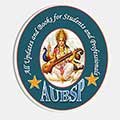Certificate by Tax Recovery Officer and Validity thereof
[Section-413 as per the Income Tax Act, 2025 (this Act) w.e.f. 1st April, 2026.]
Section 413(1) of Income Tax Act 2025
413(1) When an assessee is in default or is deemed to be in default in making a payment of tax, the Tax Recovery Officer may draw up under his signature a statement in such form as prescribed specifying the amount of arrears due from the assessee (such statement being hereafter referred to as “certificate”) and shall proceed to recover from such assessee the amount specified in the certificate by one or more of the modes mentioned below, as per the rules prescribed in this regard,—
- 413(1)(a) attachment and sale of movable property of the assessee;
- 413(1)(b) attachment and sale of immovable property of the assessee;
- 413(1)(c) arrest of the assessee and his detention in prison;
- 413(1)(d) appointing a receiver for the management of movable and immovable properties of the assessee.
Section 413(2) of Income Tax Act 2025
413(2) The Tax Recovery Officer may take action under sub-section (1), whether or not proceedings for recovery of the arrears by any other mode have been taken.
Section 413(3) of Income Tax Act 2025
413(3) The assessee shall not be entitled to dispute the correctness of any certificate drawn up by the Tax Recovery Officer on any ground.
Section 413(4) of Income Tax Act 2025
413(4) The Tax Recovery Officer may cancel the certificate if, for any reason, he considers it necessary so to do, or may correct any clerical or arithmetical mistake therein.
Section 413(5) of Income Tax Act 2025
413(5) In this section, the movable or immovable property of the assessee shall include any property—
- 413(5)(a) which has been transferred, directly or indirectly on or after the 1st June, 1973, by the assessee to his spouse or minor child or son’s wife or son’s minor child, otherwise than for adequate consideration, and which is held by, or stands in the name of, any of the said persons; and
- 413(5)(b) so far as the movable or immovable property so transferred to his minor child or his son’s minor child is concerned, it shall, even after the date of attainment of majority by such minor child or son’s minor child, as the case may be, continue to be included in the movable or immovable property of the assessee for recovering any arrears due from the assessee in respect of any period prior to such date.
FAQs on Section 413 of Income Tax Act 2025
What is a certificate under Section 413(1) of the Income Tax Act, 2025?
A certificate under Section 413(1) is a statement drawn up by the Tax Recovery Officer specifying the amount of tax arrears due from an assessee who is in default or deemed to be in default.
Who issues the certificate for tax recovery?
The Tax Recovery Officer issues the certificate for recovery of tax arrears.
What methods can the Tax Recovery Officer use to recover tax arrears as per the certificate?
The Tax Recovery Officer can recover tax arrears through attachment and sale of movable property, attachment and sale of immovable property, arrest and detention of the assessee, and appointment of a receiver for the assessee’s properties.
Can the Tax Recovery Officer act under Section 413 even if other recovery proceedings have started?
Yes, the Tax Recovery Officer can take action under Section 413(1) regardless of whether other recovery proceedings have been initiated.
Can an assessee challenge the correctness of the certificate issued under Section 413?
No, the assessee is not entitled to dispute the correctness of any certificate drawn up by the Tax Recovery Officer on any ground.
Is the certificate final and irreversible once issued by the Tax Recovery Officer?
No, the Tax Recovery Officer may cancel the certificate or correct any clerical or arithmetical mistakes in it if necessary.
What happens to property transferred by the assessee to relatives after 1st June, 1973?
Such property, if transferred without adequate consideration to specified relatives, is included in the assessee’s property for the purpose of recovering tax arrears.
Who are considered specified relatives under Section 413(5)?
Specified relatives include the assessee’s spouse, minor child, son’s wife, and son’s minor child.
Does the inclusion of transferred property apply even after the minor child attains majority?
Yes, the property transferred to a minor child or son’s minor child continues to be included for recovery even after they attain majority, for arrears relating to the period before majority.
What is the legal implication of the term “deemed to be in default”?
It means the assessee is treated as if in default even if the default is not direct, enabling recovery actions under Section 413.
What are the prescribed rules for recovery methods mentioned in Section 413(1)?
The methods of recovery are to be followed as per the rules prescribed under the Income Tax Act, 2025.
Can the Tax Recovery Officer simultaneously use multiple recovery methods under Section 413?
Yes, the Tax Recovery Officer may use one or more of the specified recovery methods simultaneously to recover the tax arrears.
What is the significance of the signature of the Tax Recovery Officer on the certificate?
The signature authenticates the certificate, giving it legal validity for initiating recovery proceedings.
What is the objective of appointing a receiver under Section 413(1)(d)?
The receiver is appointed to manage the assessee’s movable or immovable property to ensure effective recovery of tax arrears.


